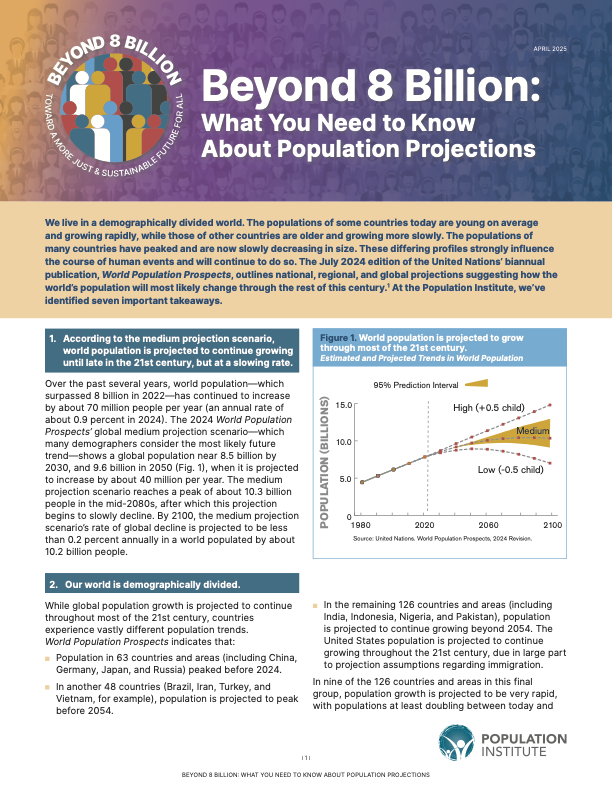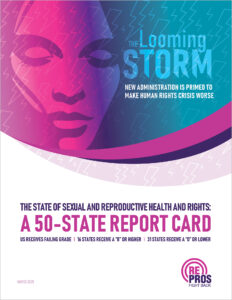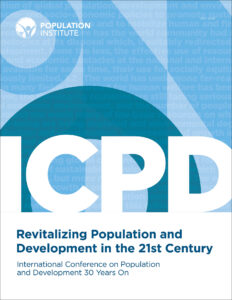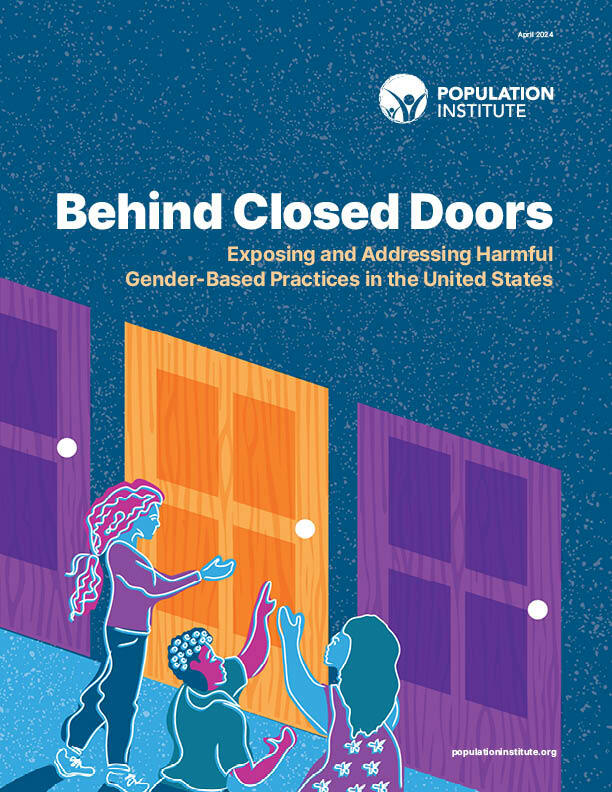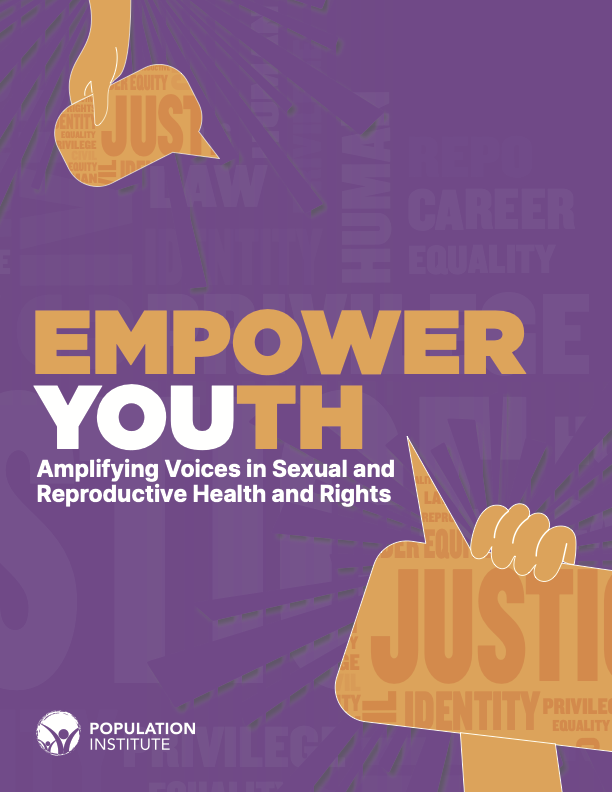In Afghanistan, the Taliban’s brutal system of gender apartheid, economic insecurity, and natural disasters has worsened humanitarian conditions and continues to threaten Afghan women’s and girls’ health. After decades of conflict, Afghanistan’s situation illustrates the critical importance of ensuring that women’s and girls’ rights, including their right to quality health services, are central to international support for the country and its people. Learn more in this new brief from rePROs Fight Back.
Demographic Realities and Global Population Trends: Ensuring Choice, Equity, and Access in an Era of Transition
Understanding global population trends is key to evidence-based decision making on a range of policies that affect women and girls. We live in a demographically diverse world, with populations in some countries young on average and growing rapidly, while those of other countries are older and growing more slowly. The populations of many countries have peaked and are now slowly decreasing in size. The Population Institute co-sponsored a Foreign Policy Analytics Insight Brief, Demographic Realities and Global Population Trends, that explores the implications of current global population trends.
Beyond 8 Billion: What You Need to Know About Population Projections
We live in a demographically divided world. The populations of some countries today are young on average and growing rapidly, while those of other countries are older and growing more slowly. The populations of many countries have peaked and are now slowly decreasing in size. These differing profiles strongly influence the course of human events and will continue to do so. The July 2024 edition of the United Nations’ biannual publication, World Population Prospects, outlines national, regional, and global projections suggesting how the world’s population will most likely change through the rest of this century. At the Population Institute, we’ve identified seven important takeaways.
Beyond 8 Billion: What You Need to Know About Population Projections
WATCH THE VIDEO: Beyond 8 Billion: What You Need to Know About Population Projections
BLOG: The Dangerous Distraction of Population Decline Alarmism
EVENT: Demographic Realities: THE TRUTH ABOUT Global Population Trends
In advance of World Population Day, the Population Institute co-hosted a virtual dialogue with Foreign Policy. The event featured speakers from UNFPA, UN Women, FP2030, and thought leaders from civil society. Speakers clarified global population trends and discussed the dangers of recent population decline alarmism narratives that often misrepresent these trends. Population trends vary widely across countries, with significant implications for national economies, healthcare systems, and social protection infrastructure. Policies on gender equality and family planning play a direct role in shaping population dynamics, and are deeply intertwined with broader social, economic, and environmental challenges. Understanding these patterns offers valuable insights into how nations can respond to and invest in the evolving needs of their populations. The Population Institute partnered with FP Analytics to develop an Insight Brief that explores these trends and focuses on the urgent need to prioritize reproductive rights and autonomy in the population policy dialogue.
2025 50-STATE REPORT CARD: The State Of Sexual and Reproductive Health and Rights
The Looming Storm: New Administration is Primed to Make Human Rights Crisis Worse
rePROs Fight Back’s 13th Annual 50-State Report Card on Sexual and Reproductive Health and Rights had some bright spots, including abortion-related ballot measures passing in 7 of the 10 states where they were on the ballot. However, the human rights crisis unleashed by the 2022 Dobbs decision has led states to continue restricting abortion access and has emboldened anti-rights advocates to increase their attacks on gender-affirming care.
Silencing Aid, Denying Services
As the world’s leading global health donor, the United States has pledged to provide equitable, accessible reproductive health care worldwide. However, two major policies often interfere with and disrupt these essential health care services: the “global gag rule” and the Helms Amendment. These policies have devastating impacts on safe abortion access and other health services for millions of people in low- and middle-income countries, disproportionately harming people of color. Meanwhile, within the United States, policies like the Hyde Amendment restrict abortion access within the United States and have come into sharper focus since the overturn of Roe v. Wade in 2022.
This set of resources analyzes the global and domestic impacts of these restrictive policies—including how Project 2025 plans to dismantle critical health care structures and protections—and outlines actionable steps to safeguard reproductive rights and services both in the United States and abroad.
Silencing Aid: What is the Global Gag Rule?
Silencing Aid: What is the Helms Amendment?
Denying Services: What is the Hyde Amendment?
Project 2025: How the Conservative Agenda Threatens Global Gender Equality and Reproductive Rights
Revitalizing Population and Development in the 21st Century: International Conference on Population and Development 30 Years On
Thirty years ago, delegates from 179 countries agreed on a broad set of priorities and actions to advance human rights, including reproductive rights, in the context of population and development concerns. The 1994 International Conference on Population and Development (ICPD) was groundbreaking in its assertion that empowering women and girls was both the right thing to do and one of the most reliable pathways to sustainable development and improved wellbeing for all.
ICPD recognized the fundamental importance of population trends in shaping our future and highlighted how these trends result from the rights and opportunities afforded to individuals. Its Programme of Action captured a comprehensive overview of the vital links between reproductive autonomy, population trends, and development.
The Population Institute invited a group of thought leaders to reflect on ICPD and to share their insights on the relevancy of seven key themes, at the time of the agreement and today. In their essays, they suggest commitments and actions needed to fulfill the ICPD promise. This volume reminds us of the variety of important commitments from the 1994 agenda, many of which have been forgotten or overlooked, and demonstrates the growing pertinence of these historic commitments in the 21st century.
EVENT: 30th Anniversary of the International Conference on Population and Development
To celebrate World Population Day on July 11, the Population Institute co-hosted an event with the Woodrow Wilson Center’s Environmental Change and Security Program and Maternal Health Initiative. The event featured thought leaders from UNFPA, USAID, academia, and civil society, including contributors to PI’s publication, Revitalizing Population and Development in the 21st Century, who shared their insights on the unfinished ICPD agenda. Panelists discussed what more is needed to realize ICPD’s vision, with particular attention paid to ways to further population and environment goals, re-focus financing commitments, and secure inclusive reproductive health and gender equality. PI President and CEO, Kathleen Mogelgaard, shared her perspective as an expert panelist. Additional resources below provide more information:
- HIGHLIGHTS: Population and Development in the 21st Century
- BLOG: World Population Day: Revitalizing Discourse on Population, Development and Rights
- RECORDING: Population and Development in the 21st Century
MINI DOCUMENTARY: Behind Every Number, a Person: Reflections on the International Conference on Population and Development
Building on the themes of Revitalizing Population and Development, PI interviewed its contributors and invited them to expand on their recommendations for tackling the unfinished business that would fulfill the ICPD promise. PI produced a mini documentary, “Behind Every Number, a Person,” that shares those insights. The video was premiered at Foreign Policy’s Her Power@UNGA79 Summit during the showcase reception. The video was a collaborative effort among many thought leaders and organizations, including Indigenous Justice Circle, Population Balance, and Population Media Center.
Sexual and Reproductive and Health in Emergencies
Conflicts, disasters, climate change, and health emergencies are causing unprecedented levels of humanitarian need around the world. Women and girls are uniquely impacted – on top of violence, displacement, and the loss of livelihoods and social safety nets, they often face disruptions in their access to sexual and reproductive health (SRH) services and a heightened risk of gender-based violence (GBV). Humanitarian actors often do not view SRH and GBV as life-threatening issues and consequently do not prioritize them in aid programs, leaving millions of women and girls without vital services and undermining their human rights. A new brief, “Sexual and Reproductive and Health in Emergencies: Promising Practices to Address the Crisis within a Crisis,” outlines critical challenges, promising approaches, and key policy recommendations for responding to some of the most pressing needs of women and girls in emergencies.
Behind Closed Doors: Exposing and Addressing Harmful Gender-Based Practices in the United States
Despite often being dismissed as foreign or cultural problems, harmful gender-based practices exist in every community across the United States, affecting countless individuals. Behind Closed Doors confronts the reality of female genital mutilation/cutting (FGM/C); child, early, and forced marriage/union (CEFMU); femicide; and virginity testing occurring within the United States—emphasizing the urgent need for comprehensive action. The ripple effect of gender-based harm transcends geographical boundaries; recognizing the universal dimensions is crucial for showing solidarity with the global community working against these injustices.
Behind Closed Doors calls for culturally competent legislation, survivor-centered resources, and comprehensive sexuality education to address the root causes and effects of harmful gender-based practices. Specific considerations must be taken for the LGBTQI+ community, who face disproportionate rates of violence and suffer unique impacts of gender-based harms. Behind Closed Doors strives to enact meaningful change and support a future where all individuals can thrive in safety and dignity through collaborative efforts with policymakers, community leaders, healthcare professionals, and advocacy groups.
WEBINAR: Breaking the Silence on FGM/C in the U.S.
Did you miss our webinar in November? Check it out below.
This webinar is the first of a three-part series that will explore the critical issue of gender-based violence (GBV) within the United States, based on findings and recommendations from the report, “Behind Closed Doors: Exposing and Addressing Harmful Gender-Based Practices in the United States”. Expert panelists shed light on the practice of FGM/C occurring within the U.S. and its impact on individuals and communities, as well as the programs and policies needed to put an end to the practice. PI collaborated on this event with Sahiyo and the U.S. End FGM/C Network.
WEBINAR HIGHLIGHTS REEL
WEBINAR: Exposing Violence Against Women in the U.S.: Missing and Murdered Indigenous Women and Girls
This webinar is the second of a three-part series that will explore the critical issue of gender-based violence (GBV) within the United States, based on findings and recommendations from the report, “Behind Closed Doors: Exposing and Addressing Harmful Gender-Based Practices in the United States.” The webinar focuses on femicide, the deliberate killing of women and girls because of their gender, within the United States, with a specific call to attention for indigenous women and girls, and includes a broad-level analysis of the systemic factors contributing to femicide, its impact on communities, and the urgent need for prevention and justice—as told by a community advocate, researcher, and policy expert. PI collaborated on this event with Indigenous Justice Circle on this event.
The State of Reproductive Health and Rights: A 50-State Report Card
Missing Pieces: Gaps in Abortion Care Create a Human Rights Crisis
In the two years since the U.S. Supreme Court overturned Roe v. Wade, which protected the constitutional right to abortion, Americans have dealt with a sexual and reproductive health landscape that is a complex puzzle, featuring fractured sex education, gender-affirming care, and family planning and abortion services. In the report card’s twelve-year history, the U.S. overall grade has dropped from a C- to an F, and the number of failing states has skyrocketed—from nine in 2012 to 25 this year.
Find out if your state is making the grade.
Click here for an overview of this Report Card
The State of Reproductive Health and Rights: A 50-State Report Card
Empower Youth: Amplifying Voices in Sexual and Reproductive Health and Rights (SRHR)
The world is currently home to the largest generation of youth in history. Youth voices should be at the forefront of advocacy for sexual and reproductive health and rights (SRHR) and in uncovering the barriers to access faced by people across the world. Young people’s valuable perspectives highlight SRHR, education, and climate change as key issue areas for a more just and sustainable future. Centering resilient youth voices is crucial to the movement as they continue to advocate for comprehensive access to SRHR for all.
Empower Youth aims to convey the universal relevance of SRHR, and sparks hope by showcasing the leadership of six young individuals from around the world. This report provides a platform for their compelling narratives that detail their endeavors, struggles, and desires in advancing SRHR.
